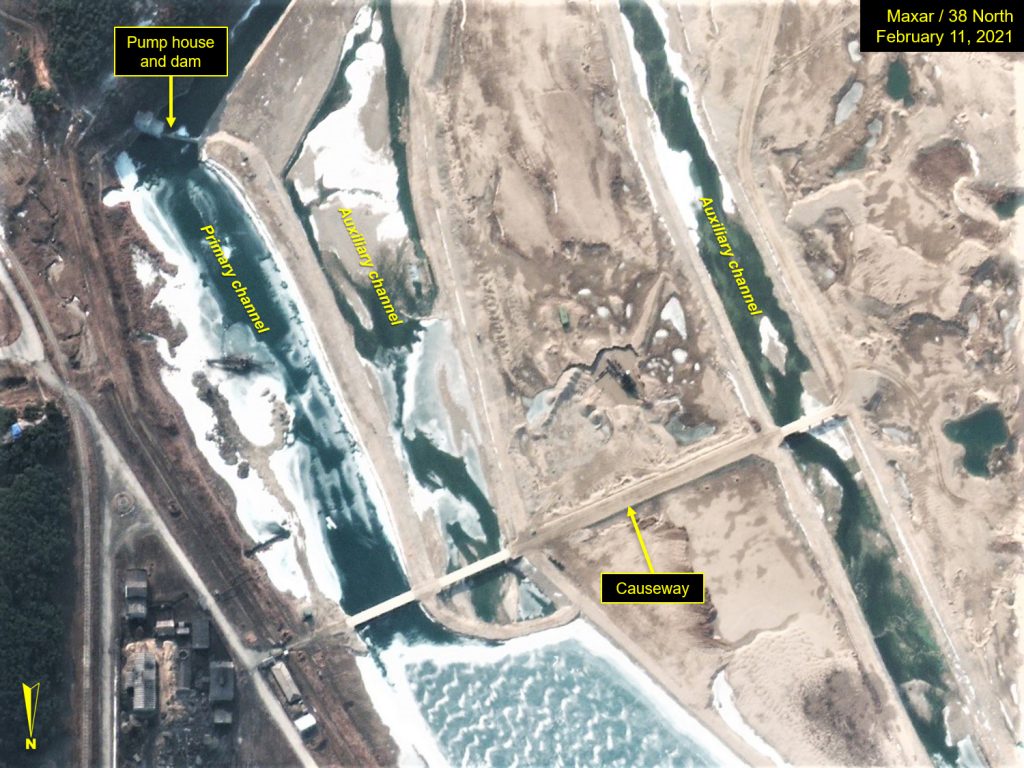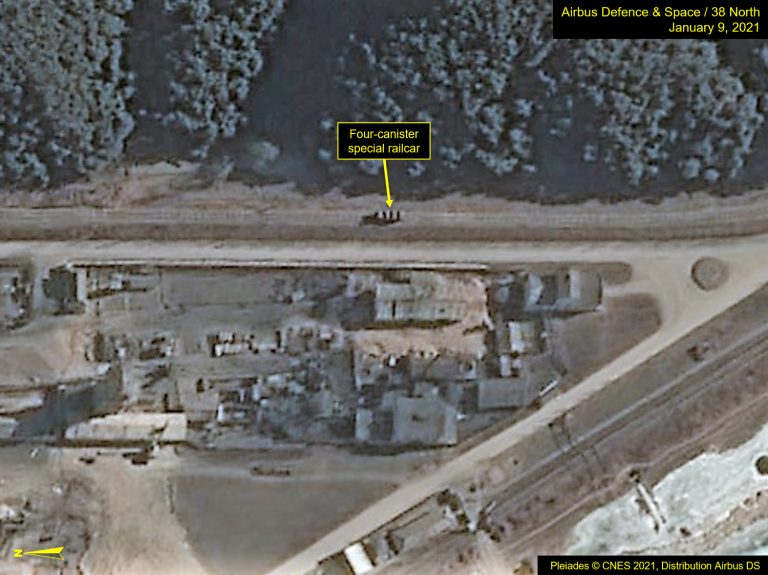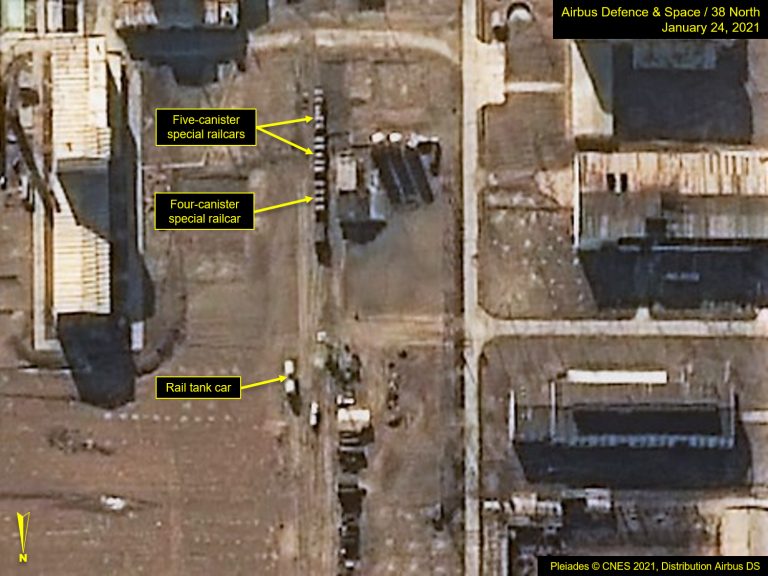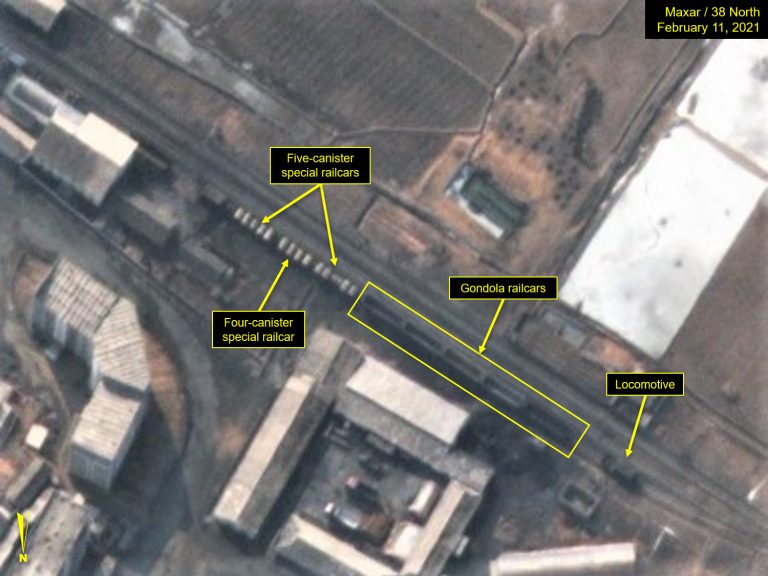North Korea’s Yongbyon Nuclear Center: Working Through Winter
Commercial satellite imagery of North Korea’s Yongbyon Nuclear Scientific Research Center from January and February 2021 indicates that while the reactors remain inactive, the Uranium Enrichment Plant (UEP) has continued operations. Other low-level activities that began last fall, such as facility construction and refurbishment and floodwater control management efforts, have resumed after what appears to have been a short pause due to freezing temperatures.
The Reactor Area
Imagery from January through February 11 revealed no signs of renewed operations at the 5 MWe Reactor, although vehicles continue to be observed around the reactor area. No reportable activity was noted at the Experimental Light Water Reactor (ELWR).
Figure 1. Vehicles visible near 5 MWe Reactor.
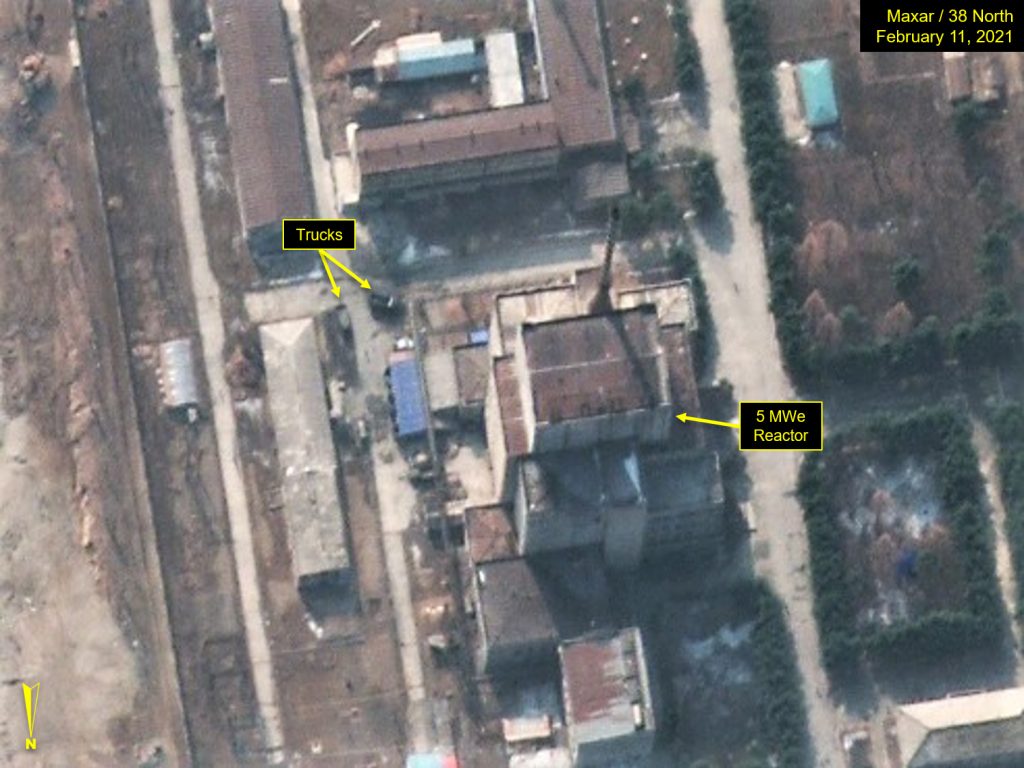
Figure 2. Overview of ELWR and 5 MWe Reactor.
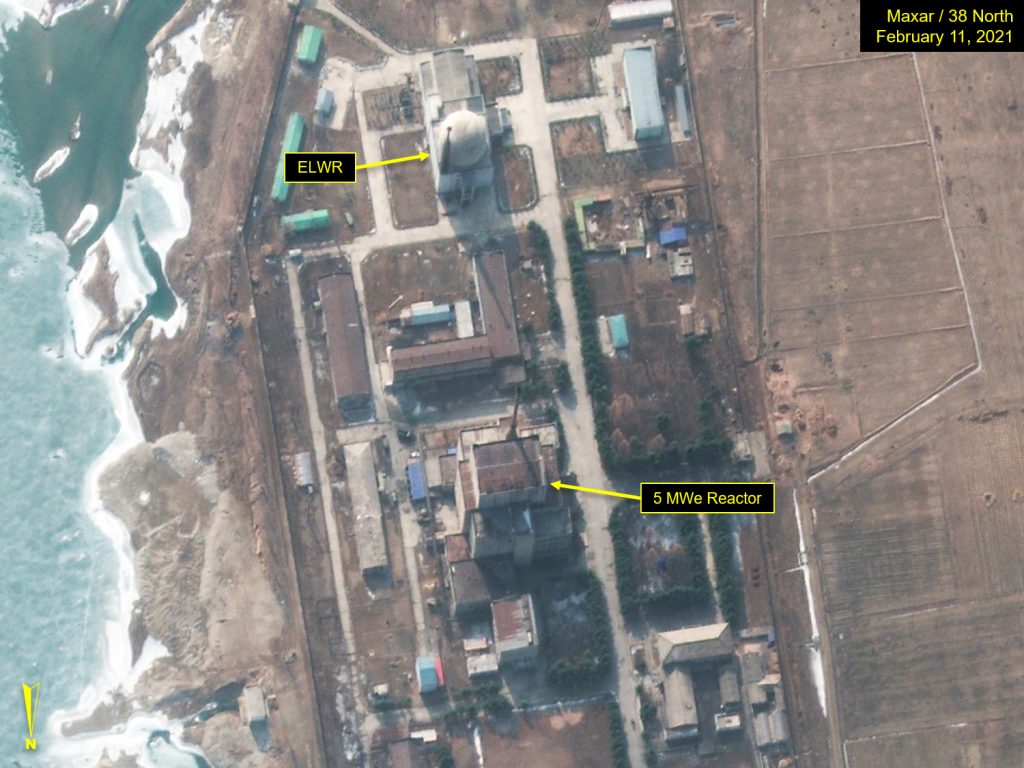
The Uranium Enrichment Plant Complex
In contrast to the reactor area of the complex, the UEP exhibited continual signs of operation throughout the winter months. While the imagery signatures for operation are subtle, there are a few that reoccur on a periodic basis. Most notable is the arrival and departure of three uniquely-configured, specialized railcars. These railcars follow a pattern: arriving two to three times a year at the rail transfer station located at the east side of the UEP complex, where they stay for approximately four weeks as they transfer their content, probably chemical reagents, and then depart. Each railcar is configured differently from the next, but all are modified flatcars with cylindrical canisters mounted to them. One has four canisters mounted transversely across the length of the car; another has five slightly smaller canisters mounted in the same manner, and the third also has five canisters, but the middle canister is mounted perpendicular to the others.
On January 9, the two five-canister railcars had arrived at the transfer station, while the four-canister railcar was observed by itself on the rail siding servicing the complex, approximately 1.3 kilometers to the northwest. On imagery from January 24, the railcar had rejoined the others at the transfer station; all were observed there again on January 30. By February 11, all three railcars had left the UEP rail yard and were observed at the city rail yard attached to a longer train, which included five gondola cars, preparing to depart the Yongbyon area.
The separation of the four-canister railcar from the other two is apparently done routinely upon arrival to Yongbyon, and has been seen separated on at least five occasions since April 2019. While there is no obvious explanation for this pattern, it does suggest the specialized cars are bringing in reagents, and not necessarily taking anything away. One possible reason for the separation is that each railcar carries a different reagent, which, if mixed with others, might cause an explosion or unwanted chemical reaction during the transfer process. Thus, the four-canister car is brought to the terminal only after the other cars have transferred their content.
In addition to the activity of the specialized railcars, a possible liquid nitrogen tanker trailer truck was observed at the UEP itself on January 30 and February 11.
Figure 3. Movement of specialized railcars near UEP, January 9, 2021 to February 11, 2021.
Note: Hover over slideshow and click on left/right arrows to navigate.
Figure 4. Possible liquid nitrogen tank truck visible near UEP.
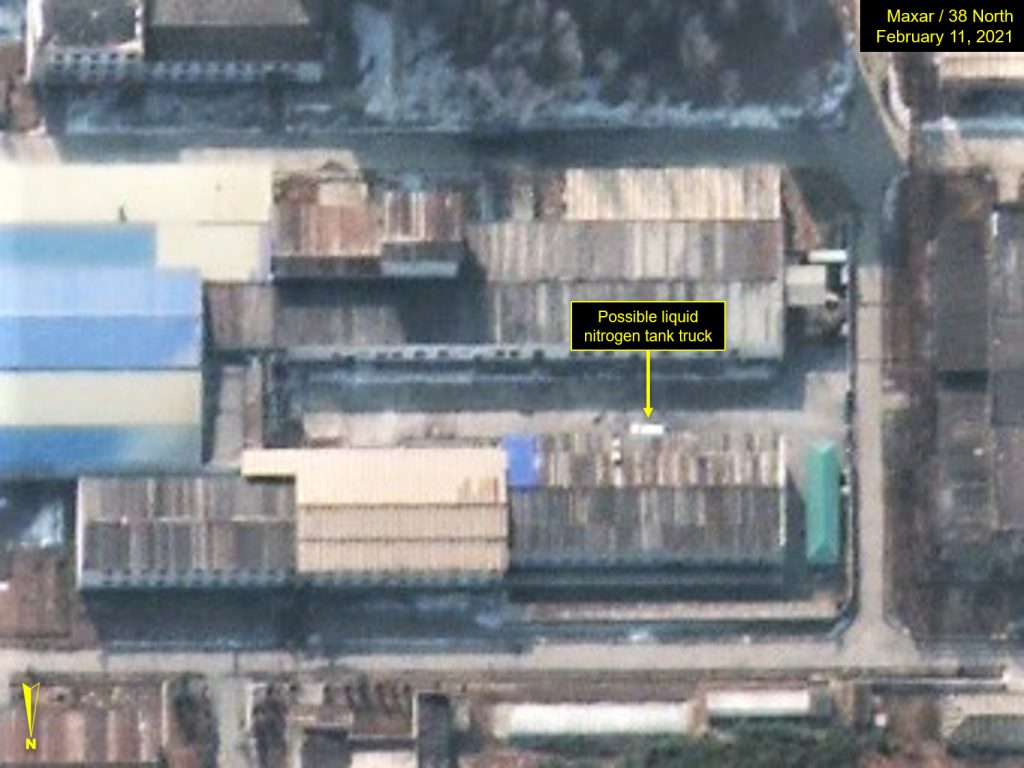
The Radiochemical Laboratory and Main Research and Administrative Headquarters Area
Little activity was observed at the Radiochemical Laboratory (Reprocessing Plant) during this period. Only one or two vehicles were observed in the motor pool area, and snow was removed from a number of the interior roads within the complex.
The building construction within the Main Research and Administrative Headquarters Area appears to be nearing completion. Of the two new buildings under construction, work on the top floor of the western-most L-shaped structure appears to be nearing completion. The roof is being installed on the smaller building, located between the new one and an older L-shaped building. A construction crane remains positioned at each of the two buildings.
Figure 5. Construction continues within the Main Research and Administrative Area.
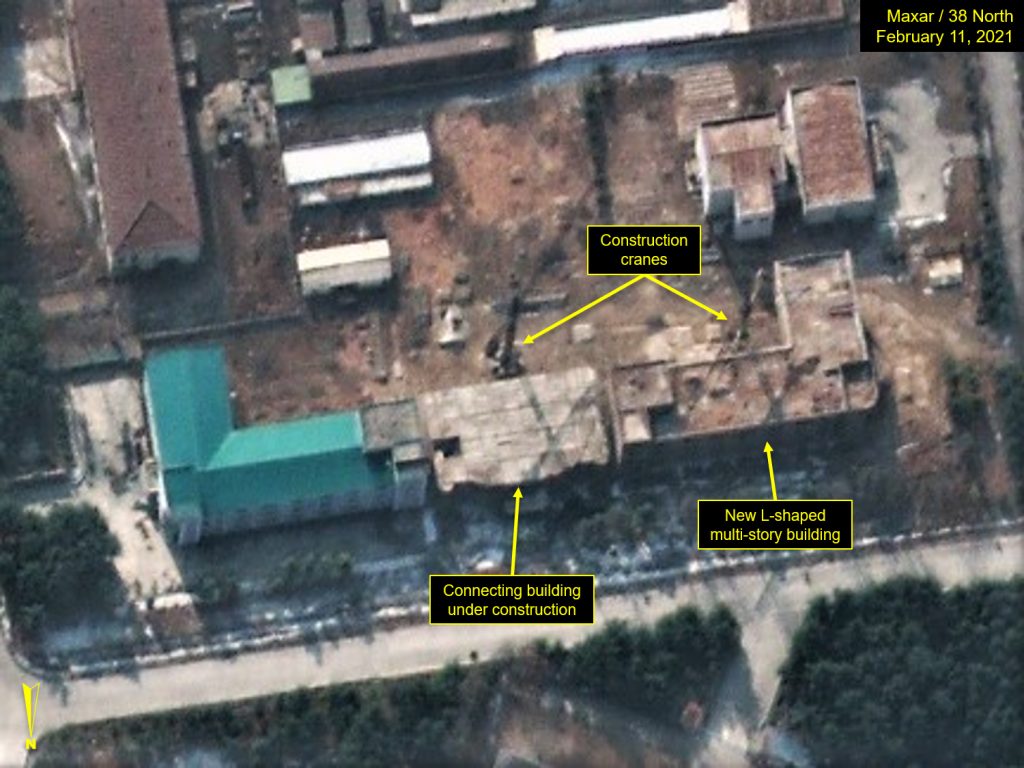
Flood Control Efforts
Much of the damage from the 2020 flooding has been repaired, but the systematic efforts to stabilize and manage the water flow continue both upstream and downstream of the main overflow dam, whose purpose is to ensure a steady water source to the reactors when placed online. While the winter freeze and snows have slowed progress, there is a concerted effort underway to build up the riverbank, creating a levee upstream of the bridge spanning the river and abutting the Main Research and Administrative Headquarters Area to prevent future high waters from flooding the complex.
Further downstream near the Radiochemical Laboratory complex, the construction on the causeway and river channeling continues. The layout includes a primary channel, which guides water toward a small dam with a sluice gate and two auxiliary channels that can be engaged during seasonal flooding. Between these channels, soil continues to be added to the center man-made islands, in effort to build them up and ensure that the channeling of water is maintained during floods so as not to overload the small dam and pump station located on its east side.
Figure 6. Levee construction near the Main Research and Administrative Area.
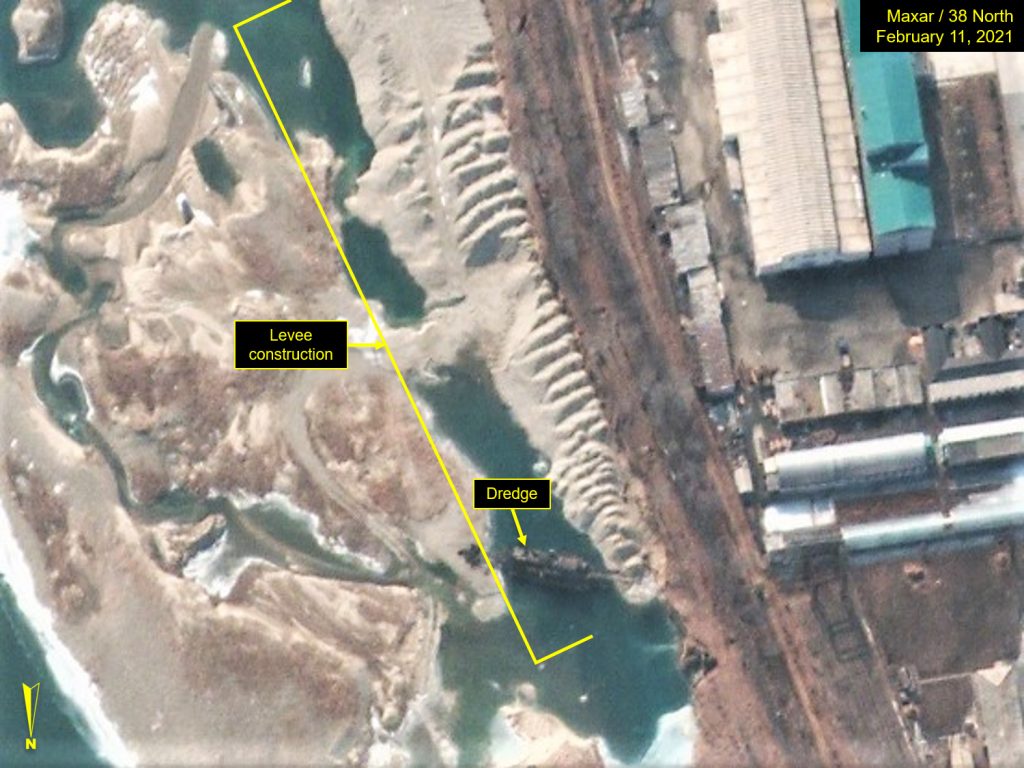
Figure 7. Continued construction of channels near Radiochemical Laboratory complex.
